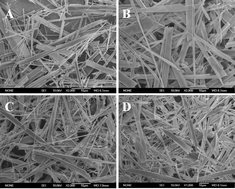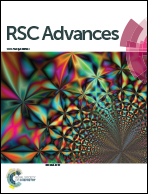Magnesium substituted hydroxyapatite whiskers: synthesis, characterization and bioactivity evaluation
Abstract
Magnesium (Mg) substituted hydroxyapatite (Mg-HAp) whiskers were hydrothermally synthesized using acetamide as a homogeneous precipitation reagent. The synthesized materials were characterized by FTIR, XRD, ICP-AES and SEM. The influence of the Mg substitution level on the lattice constants, and the stimulation of the substituted Mg ions on the proliferation of human osteoblast cells (MG-63) were investigated. The results showed that Mg-HAp whiskers with diameters of 0.2–5.0 μm and lengths up to 50 μm were obtained, and the Mg substitution amount could be well tailored by simply adjusting the initial molar ratio of Mg/(Mg + Ca) in aqueous solution. The Mg2+ incorporated into the Ca2+ crystal site, and the lattice constants decreased with the increase of the Mg-incorporation level. The biocompatibility of the synthetic products was confirmed by a culture of the osteoblasts in the extraction solutions and the suspensions of the whiskers. In addition, the Mg substitution could stimulate the proliferation of MG-63 at certain extracted concentrations. Moreover, the interactions of the whisker suspensions with MG-63 were characterized by SEM and fluorescence microscopy. The present study showed that the synthetic Mg-HAp whiskers might be applied as bioactive materials and mechanical reinforcements for bone tissue regenerations.



 Please wait while we load your content...
Please wait while we load your content...